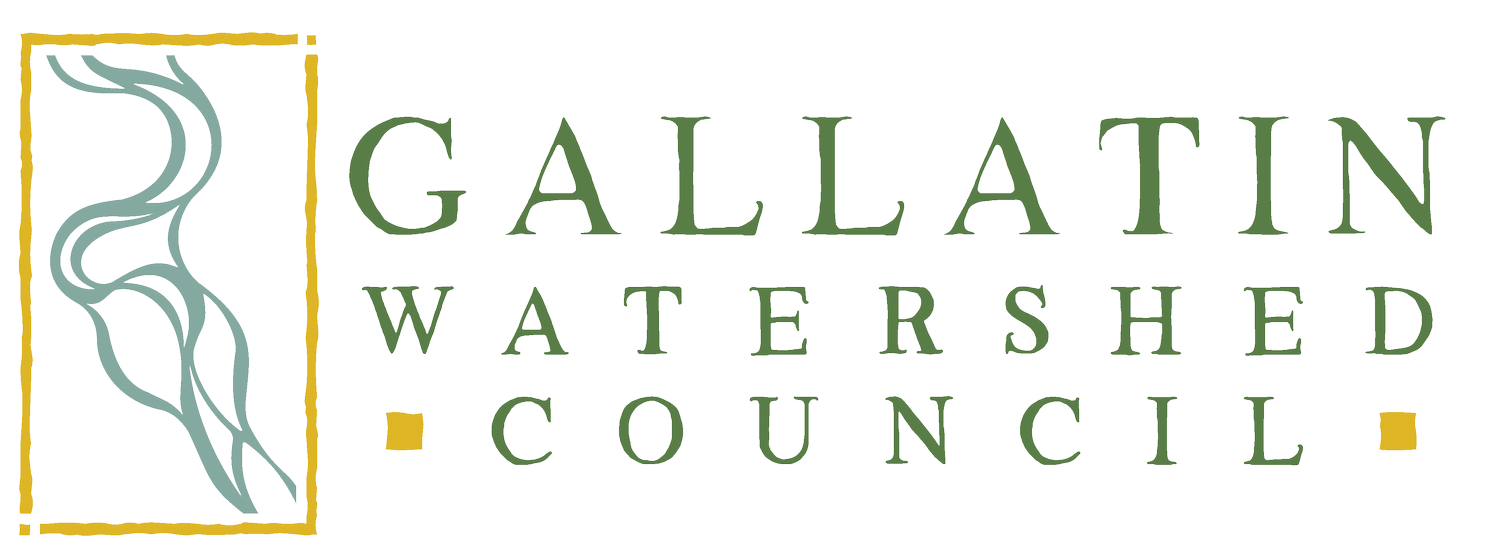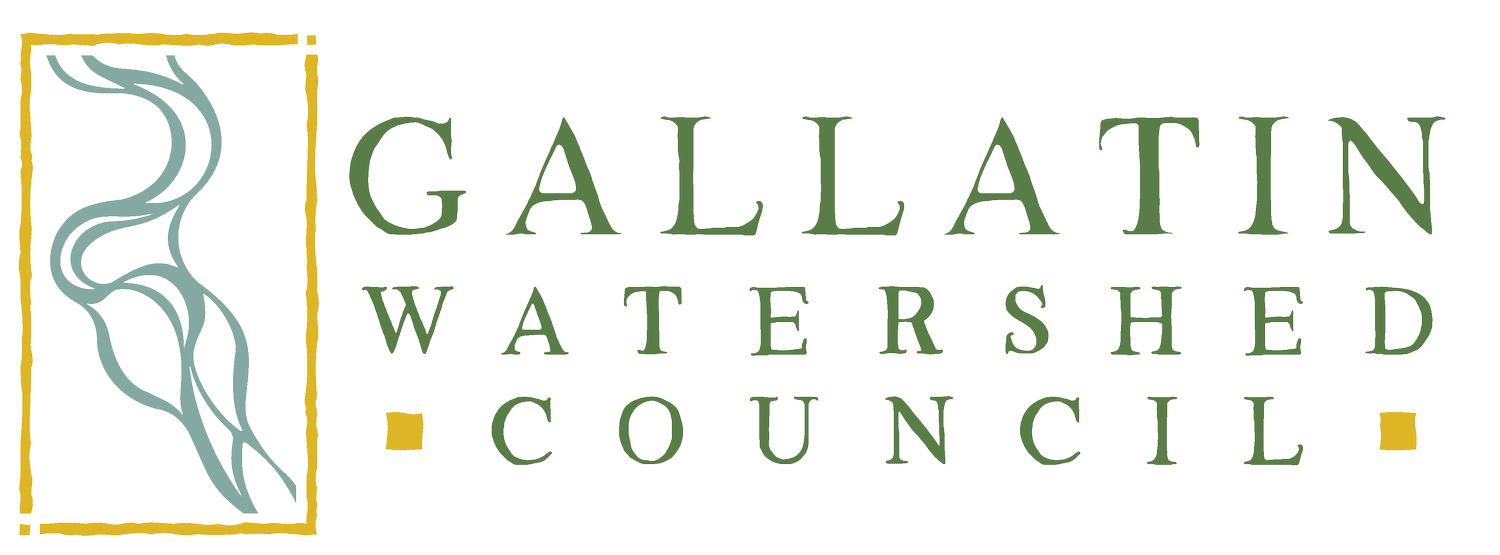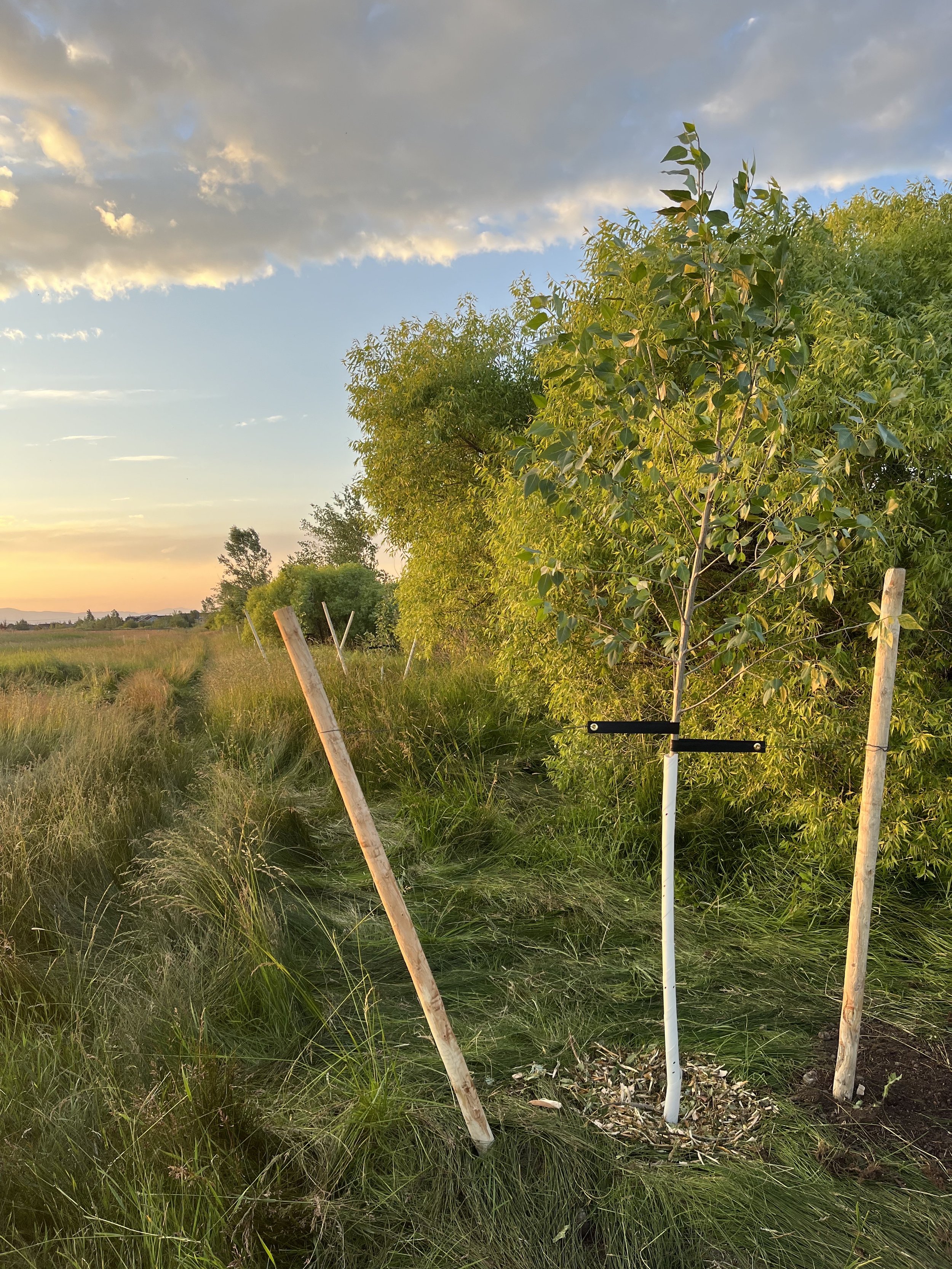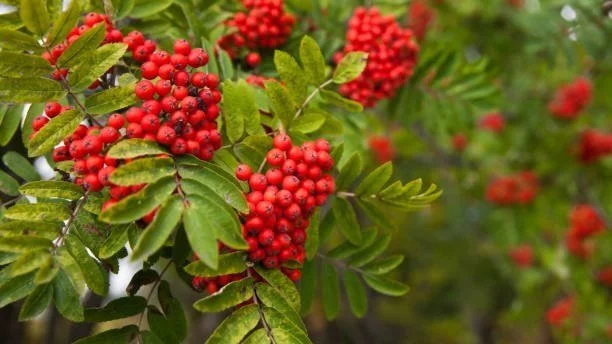Riparian Vegetation: What We’ve Been Planting
Riparian vegetation is the vegetation that is found alongside stream or river banks, and is crucial in water conservation and health. Riparian plants serve a multitude of functions:
The power of roots: The roots of riparian plants stabilize stream banks, prevent erosion, and trap sediment from entering waterways (excess sediment depletes oxygen in streams and rivers). Additionally, riparian roots help filter out nutrients and pollutants, helping maintain water quality.
Food: Aquatic insects often feed on detritus that is created by fallen wood or leaves. Riparian vegetation attracts these insects, which then attracts salmon and trout, birds, and others up the food chain. Additionally, many riparian plants produce berries and leaves that are food sources for birds, deer, and other critters.
Habitat: Many birds enjoy dense riparian vegetation for nesting and for safety. Overall, the canopy and nooks and crannies amongst the trunks make great hiding places for a variety of smaller animals. When the vegetation dies or falls, their trunks and root wads slow the flow of water and create snags and pools that animals like beavers and fish use for spawning and safety.
Shade: The canopy from riparian vegetation shades the river or stream, keeping the water temperature cool. When water temperatures rise, excess algae has a greater chance of growing and levels of dissolved oxygen drop, putting stress on fish populations.
Flood mitigation: When streams and rivers become gorged and the water begins to rise, riparian plants help soak up the excess water and slow the flow, helping to combat flooding and erosion.
An aspen planted at the Gallatin Regional Park , 2023
Take a look at a few Montana native species that we’ve been planting
The serviceberry is a fascinating riparian plant species that thrives in the sun and in moist, well-drained soil. It is a small to medium-sized deciduous tree that blooms white flowers in the spring and purple-red fruits in early summer. It typically grows to a height of 15 to 30 feet tall and grows slow and steady in comparison to other species. It is very important source of food for many insects emerging from a chilly winter. The white flowers and purple-red fruits bring various pollinators, which in turn attract birds. Birds such as cedar waxwings, northern flickers, and hair woodpeckers will also consume the nutrient dense fruits in the summer. Serviceberries got its name from being an indicator that the ground was warm enough to have a funeral service once the flowers had bloomed.
Mountain ash grows along forest edges, roadsides, and prefers moist soil and full sunlight. Its unique characteristics and contributions to the ecosystem make it truly special. It can grow to a height of 10 to 30 feet with a spread around 15 feet at maturity. It has narrow, compound leaves with slightly serrated edges. In the fall and winter you will see clusters of orange-red berries on its limbs which attract wintering birds and can be a source of food for non-migratory bird species. There are studies showing a correlation between increased amount of berries with an increased amount of small animal abundance. It can be a source of protection, covering birds and other small animals to hide from certain predators. Rabbits, moose, and wintering birds all tend to munch on this species during winter! Did you know that jams and jellies made with mountain ash berries were taken on long sea voyages to prevent scurvy? Also, if the berries ferment just right, they can make birds tipsy!
Described as a small tree or shrub, chokecherries are an important riparian plant species that thrives around low to mid elevations and can adapt to various extreme temperatures. It typically grows to a height of 25 feet and features chains of white, fragrant flowers that are followed by reddish black cherries. It is highly tolerant of city conditions and is a great tree to plant in urban settings. This is ecologically important for urban landscapes looking towards increasing canopy cover. The flowers and fruits of chokecherries increase the biodiversity in the area! Pollinating insects love them, which in turn attracts birds. You may spot northern flickers or even yellow warblers hanging out around these trees. All chokecherry trees are technically “toxic” but not all parts, not all the time, and not to all species.
Golden Currant is an important riparian plant species that thrives along stream banks of rivers. It is a non-spiny shrub whose stems grow to about 4-5 feet tall with three-lobed, maple-like leaves. The golden-yellow flowers bloom in early Spring and can turn to orangish with age. They are really good at tolerating various conditions and can be a great source of ground cover, watershed protection, and wildlife habitats. They can tolerate high wind, various pH levels, and need very little care. The shrub produces berries in the summer which attracts all sorts of birds. You know the berries are ripe when the robins start gobbling them up! The flowers and scent of the shrub attracts all sorts of pollinating insects. Did you know the berries from golden currants are a great source of antioxidants and vitamins?
Interested in planting with us? Reach out to info@gallatinwatershedcouncil.org or stay up to date with our events page!






